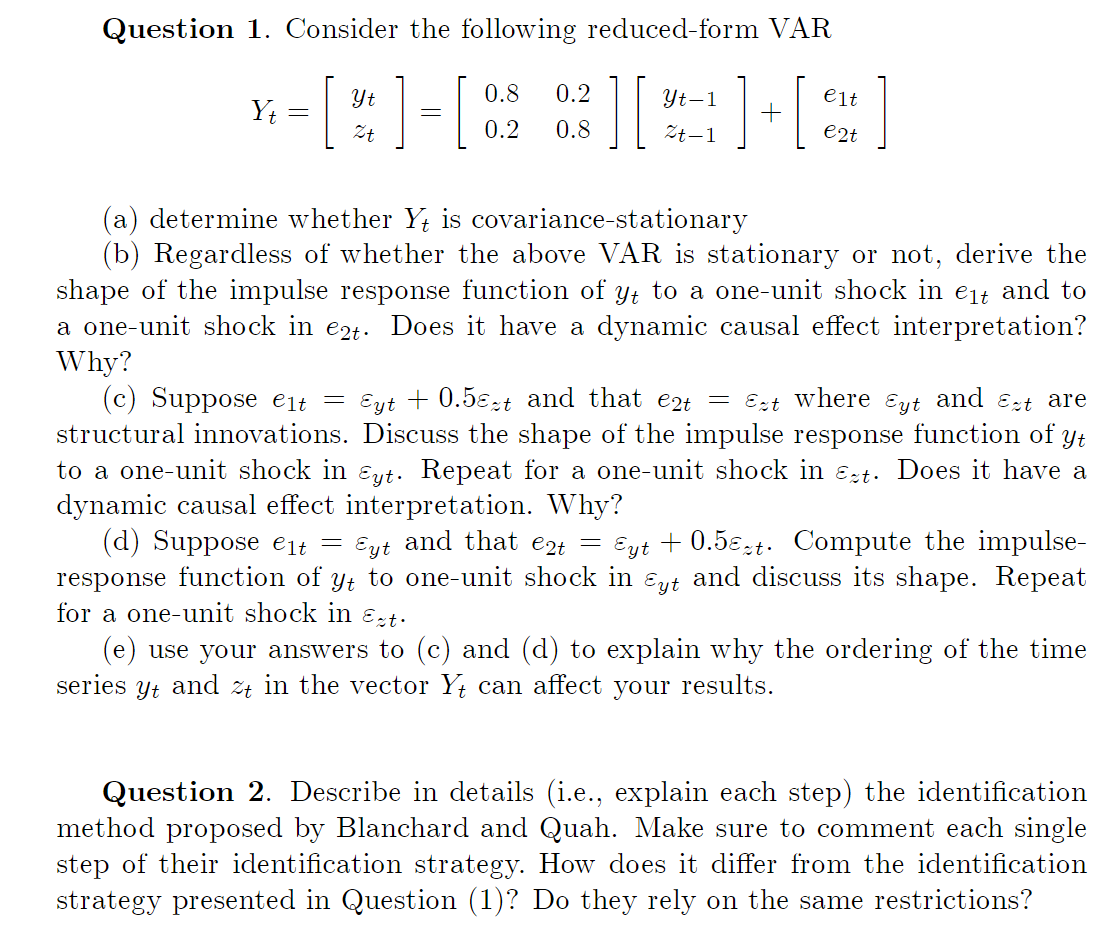
Question 1. Consider the following reduced-form VAR Yt=[ytzt]=[0.80.20.20.8][yt1zt1]+[e1te2t] (a) determine whether Yt is covariance-stationary (b) Regardless of whether the above VAR is stationary or not, derive the shape of the impulse response function of yt to a one-unit shock in e1t and to a one-unit shock in e2t. Does it have a dynamic causal effect interpretation? Why? (c) Suppose e1t=yt+0.5zt and that e2t=zt where yt and zt are structural innovations. Discuss the shape of the impulse response function of yt to a one-unit shock in yt. Repeat for a one-unit shock in zt. Does it have a dynamic causal effect interpretation. Why? (d) Suppose e1t=yt and that e2t=yt+0.5zt. Compute the impulseresponse function of yt to one-unit shock in yt and discuss its shape. Repeat for a one-unit shock in zt. (e) use your answers to (c) and (d) to explain why the ordering of the time series yt and zt in the vector Yt can affect your results. Question 2. Describe in details (i.e., explain each step) the identification method proposed by Blanchard and Quah. Make sure to comment each single step of their identification strategy. How does it differ from the identification strategy presented in Question (1)? Do they rely on the same restrictions? Question 1. Consider the following reduced-form VAR Yt=[ytzt]=[0.80.20.20.8][yt1zt1]+[e1te2t] (a) determine whether Yt is covariance-stationary (b) Regardless of whether the above VAR is stationary or not, derive the shape of the impulse response function of yt to a one-unit shock in e1t and to a one-unit shock in e2t. Does it have a dynamic causal effect interpretation? Why? (c) Suppose e1t=yt+0.5zt and that e2t=zt where yt and zt are structural innovations. Discuss the shape of the impulse response function of yt to a one-unit shock in yt. Repeat for a one-unit shock in zt. Does it have a dynamic causal effect interpretation. Why? (d) Suppose e1t=yt and that e2t=yt+0.5zt. Compute the impulseresponse function of yt to one-unit shock in yt and discuss its shape. Repeat for a one-unit shock in zt. (e) use your answers to (c) and (d) to explain why the ordering of the time series yt and zt in the vector Yt can affect your results. Question 2. Describe in details (i.e., explain each step) the identification method proposed by Blanchard and Quah. Make sure to comment each single step of their identification strategy. How does it differ from the identification strategy presented in Question (1)? Do they rely on the same restrictions







